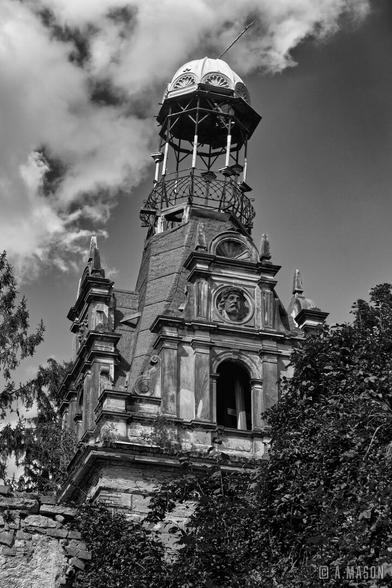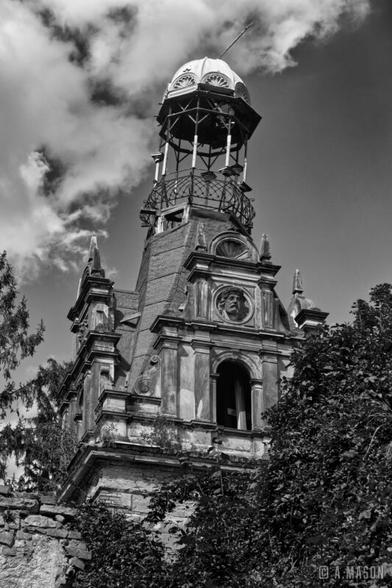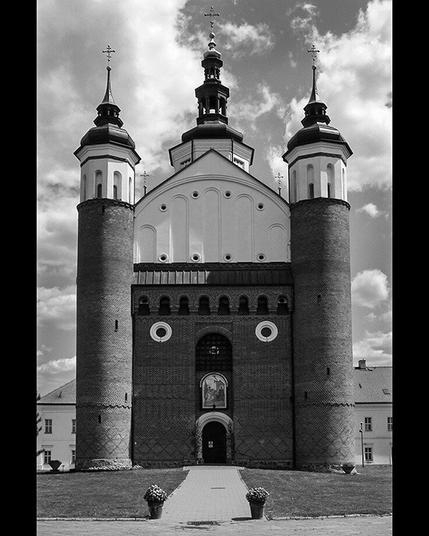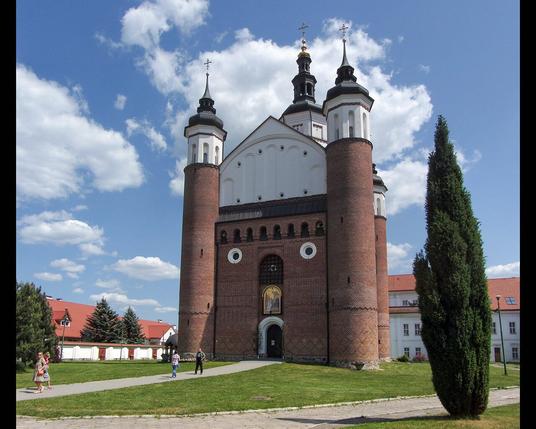#zamek
Czy na noc zamykacie główne drzwi domu na wszystkie zamki jakie są?
The best guarded part of the Malbork stronghold was the High Castle. Surrounded by two lines of walls and a moat, it was connected to the Middle Castle by a drawbridge. The High Castle was closed during the day. It was home to about 50 Teutonic brothers. The castle’s central point was a courtyard surrounded by cloisters with a well in the middle. The ground floor of the castle contained a kitchen, utility rooms and a cell for the most important prisoners. The first floor housed the monks’ rooms, the Church of the Blessed Virgin Mary, the chapter house and the treasury. The convent chamber was located even higher. Grain supplies were hidden in the attics, which were supposed to last two years of a potential siege. A 66-meter watchtower, which was also the church’s bell tower, towered over everything.
#malbork #zamek #castle #polska #poland #historia #history #architecture #architektura #gothicarchitecture #gothic #widok #landscape #krajobraz #krzyzacy #zakon #teutonicorder #teutonicknights #knights #rycerze #walls #wall #mury #mur #defensivetower #defensivewall #wieza #tower #towers
In addition to the Great Refectory, the Middle Castle also contained the Grand Master’s Palace, the Grand Commander’s chambers, the Armoury, rooms for visitors and an infirmary.
#malbork #zamek #castle #polska #poland #historia #history #architecture #architektura #gothicarchitecture #gothic #widok #landscape #krajobraz #krzyzacy #zakon #teutonicorder #teutonicknights #knights #rycerze #walls #wall #mury #mur #defensivetower #defensivewall #defensivewalls #birdseyeview
The most representative place of the entire complex was the Great Refectory, a huge hall located in the western wing of the Middle Castle. It was in this hall that the Teutonic Knights organized feasts and banquets. The hall, measuring 30m x 15m, was the largest room of its kind in the whole of Central Europe. It could accommodate 400 people. Its magnificent, palm vault is still supported by three slender pillars to this day. The interior design of the room was complemented by windows with colorful stained glass and frescoes, headed by the image of the Blessed Virgin Mary, the patron saint of the Teutonic Order, located above the main entrance.
#malbork #zamek #castle #polska #poland #historia #history #architecture #architektura #gothicarchitecture #gothic #widok #landscape #krajobraz #krzyzacy #zakon #teutonicorder #teutonicknights #knights #rycerze #walls #wall #mury #mur #defensivetower #defensivewall #defensivewalls
In what areas is the castle in Malbork record-breaking?
1) The largest brick castle in the world - a fortress so fortified that it was never conquered militarily, the inhabitants could survive 3 years without any supplies, and the monastery part was accessed by 4 bridges thrown over the water.
2) The largest kitchen hood in the world - the most exquisite food of the Middle Ages came out of the kitchen, this was confirmed by important heads of Europe at that time, it was also tasted by King Casimir the Great.
3) The largest sculpture of medieval Europe - the Malbork Madonna is over 8 meters high, it was recreated by modern conservators, covered with a mosaic containing real gold. It can be seen on the castle walls of the chapel, from under the ticket office building. Interestingly, the glass cubes were brought from Venice, and the gold elements from Gdańsk.
4) The largest number of latrines in a stronghold in the Middle Ages - even cooks had their own toilet, and cabbage leaves were often used as toilet paper, which also had medicinal properties, e.g. anti-inflammatory.
5) The largest number of wells in a castle in the Middle Ages. Interestingly, the fortress also had access to running water.
6) The oldest underfloor heating in these lands - large stones in the basement were heated in fireplaces and acted as storage furnaces. The heat escaped into the rooms through special holes in the floors.
#malbork #zamek #castle #polska #poland #historia #history #architecture #architektura #gothicarchitecture #gothic #widok #landscape #krajobraz #krzyzacy #zakon #teutonicorder #teutonicknights #knights #rycerze #walls #wall #mury #mur #defensivetower #defensivewall #defensivewalls #tower #wieza
Malbork Castle is full of legends and mysteries. One of the most famous is the story of Maria of Brzozowa, who was supposedly bricked up alive in one of the castle’s chambers. According to another legend, there was supposed to be a place under the castle that conceals the treasures of the Teutonic Order. Of course, there is no confirmation that these stories are true, but they are what make Malbork an even more mysterious and intriguing place.
#malbork #zamek #castle #polska #poland #historia #history #architecture #architektura #gothicarchitecture #gothic #widok #landscape #krajobraz #krzyzacy #zakon #teutonicorder #teutonicknights #knights #rycerze #walls #wall #mury #mur #defensivetower #defensivewall #defensivewalls
The building has an impressive volume of 250 thousand cubic meters, 30 million bricks were used to complete the entire complex, of which 4.5 million are in the high castle. This makes it the largest brick structure in the world.
#malbork #zamek #castle #polska #poland #historia #history #architecture #architektura #gothicarchitecture #widok #landscape #krajobraz #krzyzacy #zakon #teutonicorder #teutonicknights #knights #rycerze #walls #wall #mury #mur #defensivetower #defensivewall #defensivewalls
It is an example of Gothic architecture of impressive size. It is considered the largest Gothic castle in the world in terms of area occupied - 21 hectares. The castle has many towers, and the defensive walls create a unique view.
#malbork #zamek #castle #polska #poland #historia #history #architecture #architektura #gothicarchitecture #widok #landscape #krajobraz #krzyzacy #zakon #teutonicorder #teutonicknights #knights #rycerze #walls #wall #mury #mur #defensivetower #defensivewall #defensivewalls
The Teutonic Knights, along with the Knights of St. John and the Knights Templar, are one of the three largest orders to emerge from the crusades of the 11th and 12th centuries. The beginning of the Malbork Castle was built between 1275 and 1300. Initially, at the end of the 12th century, the seat of the Teutonic Order was located in Acre, then from 1209 in Montfort, and finally it was moved to Malbork in 1309.
From the beginning, the order wanted to conquer Pomerania and unite with Brandenburg, initially buying lands, and finally moving to open military operations against Poland.
The lost Battle of Grunwald began the decline of the Teutonic Order, crowned by defeat in the Thirteen Years’ War. From 1457 to 1772 Malbork Castle became one of the residences of Polish Kings.
From 1772, the castle was taken over by the Prussians and its regular devastation began. Gothic vaults and windows were demolished, cloisters were bricked up, new windows were forged, and the Palace of the Grand Masters was transformed into a cotton mill.
In 1816, a major reconstruction of the castle began to restore its historical value. Not everything was rebuilt in accordance with the original, replacing the original materials with more modern ones.
From 1933, the Nazi flag was hung on the Malbork Castle. This place was used for ceremonies.
In 1945, after the battles for the city with the Red Army, during which the castle was turned into a point of resistance, about 70% of the buildings of the High Castle, the Middle Castle, the Tower and the castle church were completely destroyed.
(continued in comment)
#malbork #zamek #castle #polska #poland #historia #history #architecture #architektura #gothicarchitecture #widok #landscape #krajobraz #krzyzacy #zakon #teutonicorder #teutonicknights #knights #rycerze
Erected between 1350 and 1366 near the border of the Ostróda commandry with Masovia, at the behest of Günther von Hohenstein.
In 1410, after the Battle of Grunwald, fought just a few kilometers from Olsztynek, the castle was seized by the townspeople and handed over to Władysław II Jagiełło. After being reclaimed by the Teutonic Knights, it was damaged during the Polish–Teutonic War of 1414 and the Thirteen Years’ War.
During the last war between the Order and Poland, in December 1519, Olsztynek was taken by the troops of Crown Hetman Mikołaj Firlej, who, after the garrison of 200 soldiers surrendered, began an occupation of the castle lasting over a year. After the secularization of the Teutonic Order in 1525, the town was incorporated into Ducal Prussia, and the castle became the administrative seat of the princely starost.
In 1651 and 1685, the castle buildings were damaged by fires. By the late 18th century, after renovations, they were converted into offices for the Prussian commissariat, and part of the medieval structures was demolished. Between 1847 and 1849, the remnants were remodeled in a Neo-Gothic style and converted into a gymnasium. After being damaged during World War II, the rebuilt fragments of the castle were incorporated into a school building.
#olsztynek #poland #polska #architektura #architecture #historia #history #zamek #castle #warmia #budynek #building #widok #krajnobraz #landscape #budowla #krzyzacy #zakonkrzyzacki #teutonicorder #teutonicknights
#Architektur #burg #Polska #pomorskie #mobile #Poland #palac #pałace #architektura #MobilePhotoTrip #FotografiaKolorowa #YesImMobile #Malbork #ColourPhotography #Samsung #Marienburg #architecture #SamsungGalaxy #ZamekWMalborku #ColourPhoto #SamsungA52 #OrdensburgMarienburg #kolor #SamsungGalaxyA52 #zamek #hrad #castle #zamki
»Panorama na zamek w Malborku«
Panorama na zamek w Malborku
https://www.mason.org.pl/fotoblog/podroze/polska/malbork/panorama-na-zamek-w-malborku
Entrance to castle, Prague, Bohemia, Austro-Hungary between ca. 1890 and ca. 1900. Views of the Austro-Hungarian Empire
#Prague #Bohemia #Austro #European #EingangzumSchloss #Práha-venkodou #Zámek #Amsterdam #theAustro- #Europe #photography #historicalPhotos
#castle #zamki #Polska #BnW #burg #Poland #Architektur #PolskaPieknyKraj #dolnoslaskie #Siedlimowice #CzarnoBiale #palac #Schönfeld #BlackAndWhite #FujiFilmXT100 #architektura #FujiFilmX #bwfoto #FujinonXC1545mm #FujiFilm #FujinonXC50230mm #architecture #XC50230mm #zamek #hrad
»Wieża pałacu w Siedlimowicach«
Wieża pałacu w Siedlimowicach
https://www.mason.org.pl/fotoblog/podroze/polska/siedlimowice/wieza-palacu-w-siedlimowicach
In September 1947, the Chief Directorate of Museums and Protection of Collections ordered the full reconstruction of the entire monastic complex.
After the war, an agricultural school operated in the monastery buildings, and from the 1980s, the buildings were gradually handed over to the Polish Autocephalous Orthodox Church, which carried out conservation and renovation work.
In 2021, the 37-year-long reconstruction of the main church of the monastery was completed. It is a structure that combines defensive and sacred functions, featuring elements of Byzantine and Gothic styles.
#suprasl #cerkiew #cerkiewprawoslawna #orthodox #orthodoxchurch #podlasie #kosciol #church #polska #poland #architektura #architekturasakralna #architecture #sacralarchitecture #temple #swiatynia #chrzescijanstwo #christianity #zamek #castle #monastery #monaster #russians #germans #history #historia
Aqara představila nový chytrý zámek U300! Chlubí se dlouhou výdrží i širokou kompatibilitou
Nový chytrý zámek Aqara U300 je určen pro dveře s klikou nebo koulí
Nabízí podporu Apple Home Key, Matter a Threa...| Celý článek najdete na https://tinyurl.com/ymddejme
The monastery in Supraśl is one of five male Orthodox monasteries in Poland. Work on the main church, a defensive temple dedicated to the Annunciation, began here in 1510.
In 1635, the monastery came under the control of the Uniates and was administered by the Basilian order for nearly 200 years. This order significantly expanded the complex, adding new Baroque furnishings to the monastery church and a three-tiered iconostasis with a crowning element.
In 1824, after Supraśl fell under Russian rule, the monastery was taken over by the Russian Orthodox Church. The male monastery functioned until 1915, when the monks went into exile.
During the interwar period, the monastery buildings belonged to the Salesians.
From 1939 to 1941, the monastery was devastated by the Soviet troops stationed there. A kitchen was set up in the Church of St. John the Theologian, and a forge was established in the main temple. Soldiers removed icons from the building and destroyed the Baroque iconostasis.
In 1944, retreating Germans blew up the main church and forced the monks to leave the monastery. The remains of the temple were secured as a permanent ruin after World War II.
#suprasl #cerkiew #cerkiewprawoslawna #orthodox #orthodoxchurch #podlasie #kosciol #church #polska #poland #architektura #architekturasakralna #architecture #sacralarchitecture #temple #swiatynia #chrzescijanstwo #christianity #zamek #castle #monastery #monaster #russians #germans #history #historia


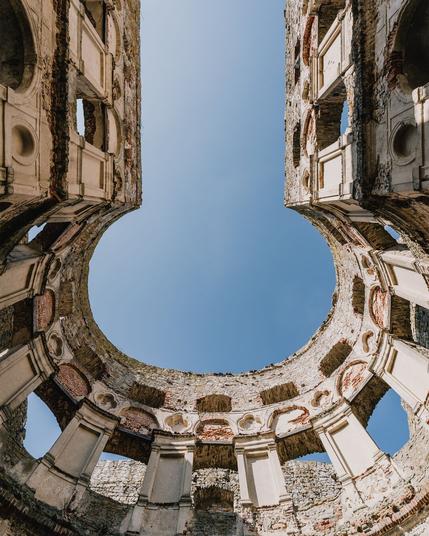
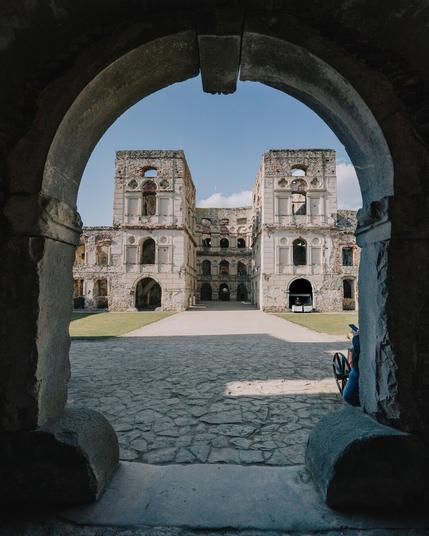
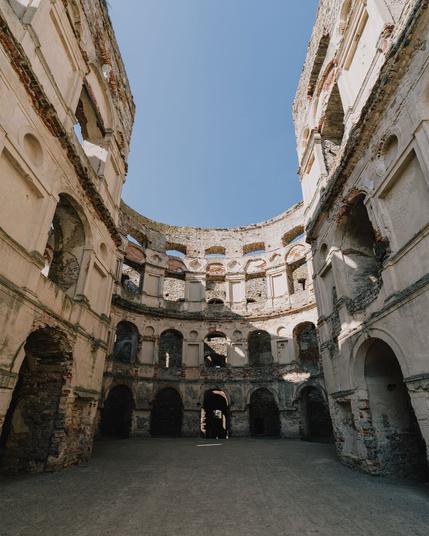
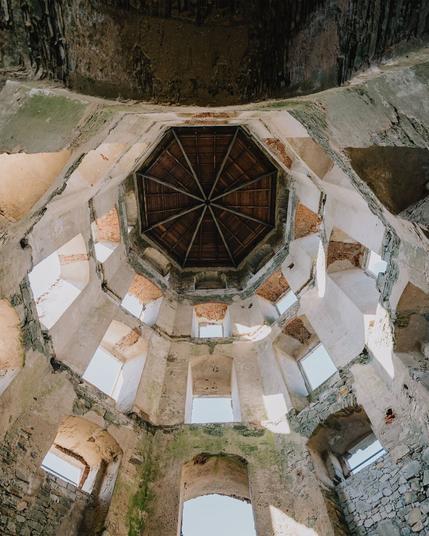
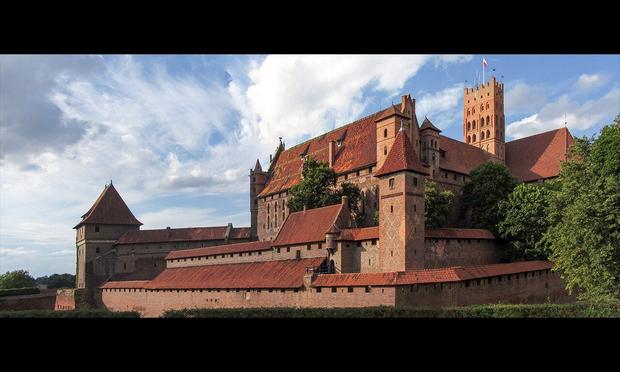
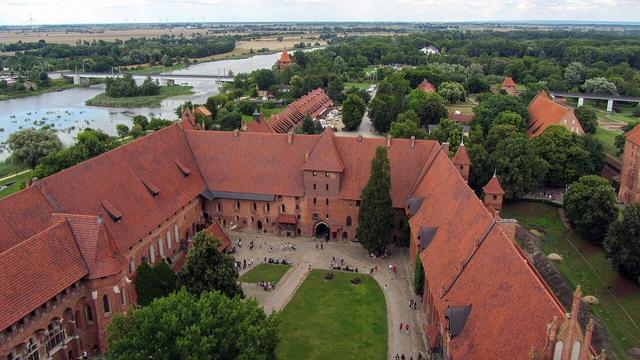
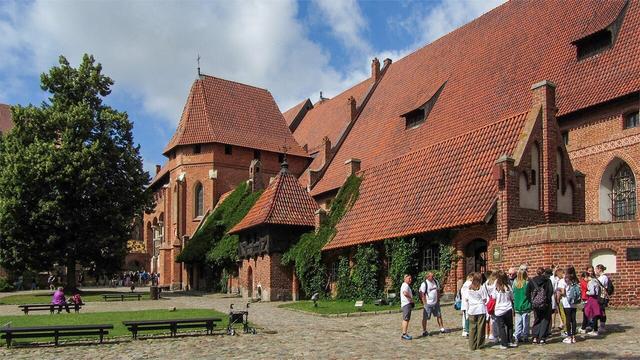
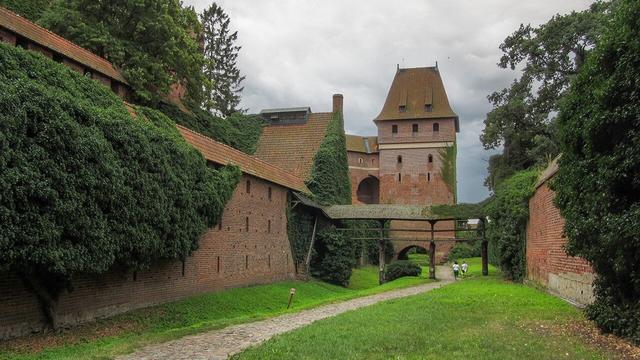
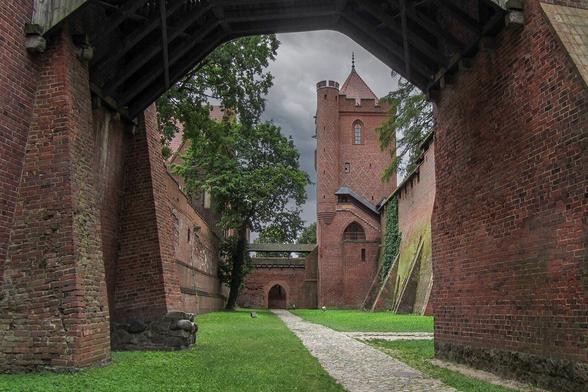
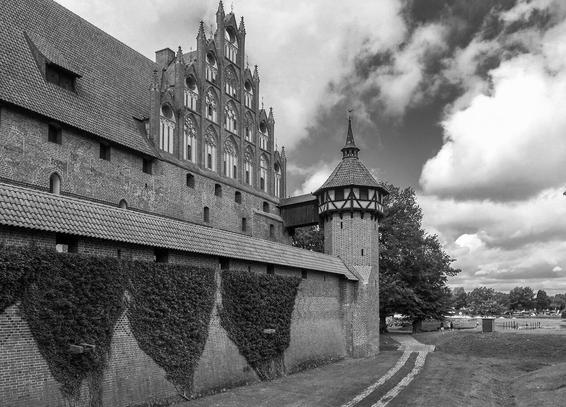
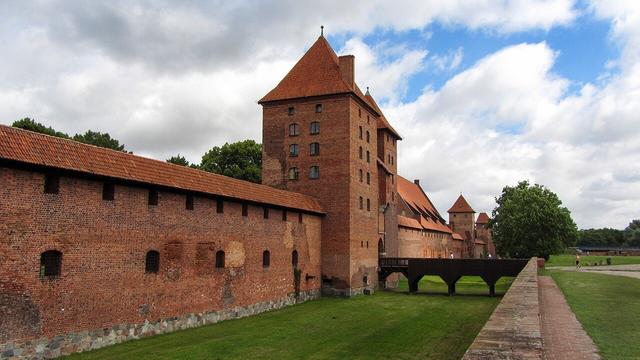
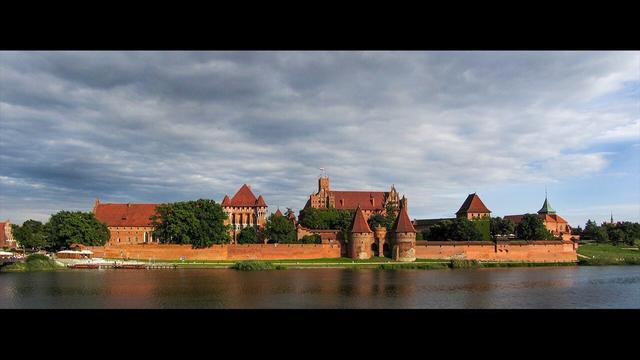
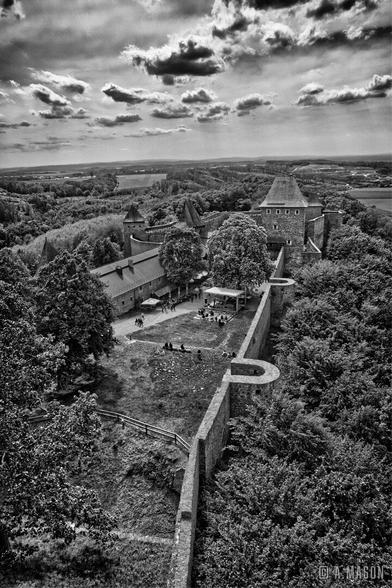
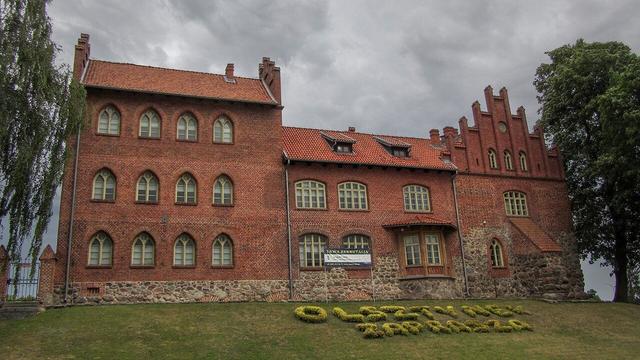
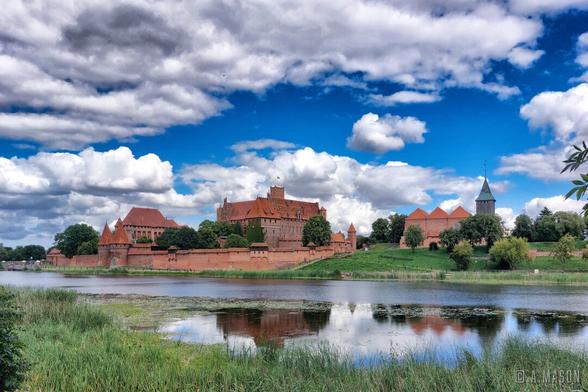
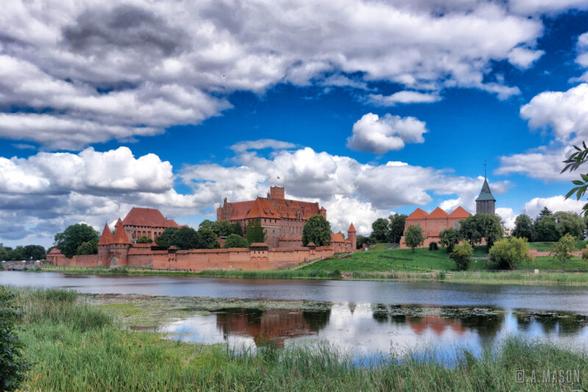
![This image depicts a historical photograph showing a grand, European-style castle with ornate architecture. The building features multiple levels of windows and dormers, decorative cornices along the roofline, and classical statues adorning its facade. In front of the entrance stands an impressive array of sculptures on pedestals, likely representing allegorical figures or important historical characters associated with the establishment.
The courtyard in front is spacious, made up of cobblestones, suggesting a well-maintained area possibly used for formal gatherings or public events. A couple of individuals can be seen walking near one side entrance, adding scale to the imposing structure and giving viewers an idea of its grandeur. The sky above appears overcast with muted yellowish hues, perhaps indicating either early morning light or late afternoon softening.
The photograph is labeled "P.Z." followed by a date in Roman numerals (1893), which could stand for Prague Castle, and additional text that reads "Eingang zum Schloss," translating to the entrance of the castle. The bottom right corner bears another label stating "Práha - venkodou Zámek" with an illustration credit going to Van der Voort & Sons, Amsterdam.
This image is part of a collection showing various views from around the Austro-Hungarian Empire during approximately 1890-1900. It provides valuable historical insight into architectural styles and urban p [...]](https://files.mastodon.online/cache/media_attachments/files/113/542/454/940/546/203/small/2099e29c9c1bd058.jpeg)
